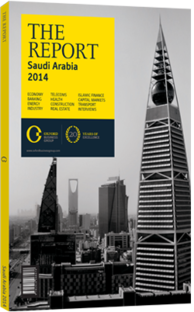Arja Talakar, CEO, Siemens Saudi Arabia: Interview

Interview: Arja Talakar
How much of the Kingdom’s energy mix will consist of renewables in the medium to long term, and which will be the greatest contributors?
ARJA TALAKAR: Over the next 15 years we expect renewables to make up 10-20% of the Kingdom’s energy portfolio. The goal is not to replace hydrocarbons, but to create a rounded approach that will reduce the amount of oil burned domestically, freeing it for sale to the international market. Of the renewable resources available, the greatest potential lies in wind and solar. Whenever you discuss renewables in Saudi Arabia, people automatically think of solar, because of all the sunlight the Kingdom receives. However, the amount of particulates in the air, combined with the high temperatures, produce conditions that are not optimal for high photovoltaic efficiency. We found that if you replace 100 MW of oil-based power production with solar, the payback period would be eight to 10 years. If you replaced it with wind your payback would be in four to five years. Saudi Arabia has very good wind potential, with windy areas located close to population centres. We see wind as more attractive economically, and as the primary renewable resource for the Kingdom. Solar will be best utilised as a supplementary power source in individual units, such as using photovoltaic panels on rooftops to help offset electricity requirements during the day.
Renewables, especially wind and solar, are volatile, making it more difficult to predict what you will have available and when, compared to fuel-based energy sources. To get a better understanding as to what wind and solar conditions you will have in the future, you will have to rely on the effective collection and analysis of big data. You will need to understand demand during specific times of the day and year, because in Saudi Arabia there are large variances between day and night, winter and summer, and depending on the holiday schedule. You need to compare this demand to what you will have available, given the fluctuating weather patterns. Only then can you effectively integrate renewables into the national system at a significant level.
What can the private sector do to help make renewable energy financially attractive?
TALAKAR: The private sector must work with the government and universities to develop an attractive business models. This requires a market-based model in which the government uses subsidies to push innovation, not as long-running grants. Instead of giving long-term subsidies for operations, funding should be spent on research and development (R&D) initiatives and financing for start-ups. The key is to create a system in which the private sector can see opportunities for innovation and profitability. If you don’t have a proper business model, nobody will invest. If you allow the sector to only be driven by the approach of an idealistic few, you won’t see development, and in the end it doesn’t help the country or society.
How is research helping the industry improve and minimise environmental impacts?
TALAKAR: We have made great strides in terms of efficiency, reducing the environmental impact of growing global energy demands through innovation stemming from R&D efforts. Over the last 20 years we have improved the efficiency of gas turbines by over 10%. When these new combined-cycle gas turbines are coupled with recent breakthroughs in thermal efficiency, we can nearly double the output of gas plants. Similarly, great strides have been made in improving the efficiency of transmission lines. Using AC lines you would lose a few percentage points of power over 1000 km at 400 KV. With new DC lines you can reduce these losses substantially. That is a huge improvement in efficiency. In renewables, we need to have consistent investment and engagement with our most innovative minds to push for higher power outputs at lower prices. If you give them money and time, they will find solutions. R&D is key to renewables.
You have reached the limit of premium articles you can view for free.
Choose from the options below to purchase print or digital editions of our Reports. You can also purchase a website subscription giving you unlimited access to all of our Reports online for 12 months.
If you have already purchased this Report or have a website subscription, please login to continue.

